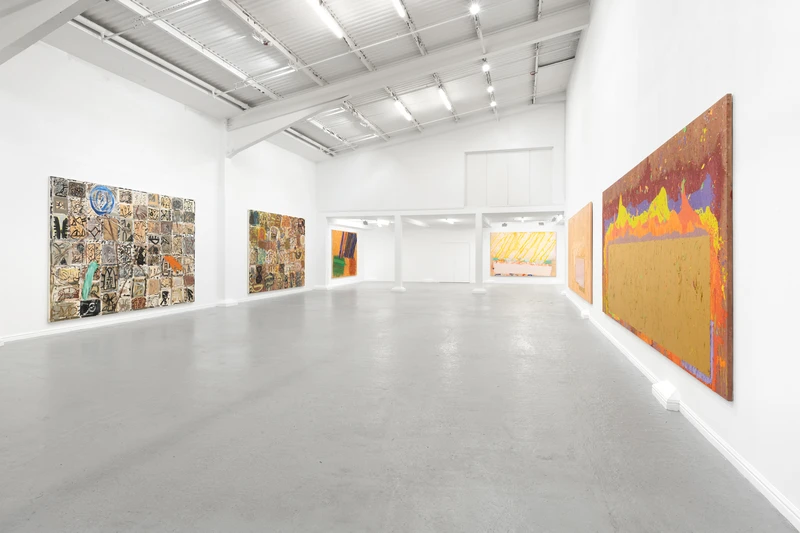Monuments
14 Jul-30 Jul 2023
PV 14 Jul 2023, 6-9pm


Monuments brings together monumental abstract paintings by three legendary artists and contemporaries, John Hoyland RA, Albert Irvin OBE RA and Basil Beattie RA.
Monuments has been selected by Hales Gallery cofounder Paul Hedge and London based painter Paul Moriarty. Both share a deep interest, passion and shared knowledge for these artists from working class backgrounds, who exemplify the best of British abstract painters of this era.
Monuments explores breakthrough moments in each artists’ oeuvre over the course of three decades. The show celebrates these key periods of painterly development, in which they explored a desire to make innovative work which envelops the viewer. During their long careers they made, and in the case of Beattie continue to make, paintings on a vast scale in which reference is made to architectural form.
Hoyland (b.1934 Sheffield, UK – d.2011 London, UK), Irvin (b. 1922 London, UK – d. 2015 London, UK) and Beattie (b. 1935 Hartlepool, UK) are part of a milieu of British artists whose work continued the legacy of Abstract Expressionism. Inspired by the first American Abstract Expressionism shows in London’s galleries and museums during the 1950s, particularly The New American Painting show at Tate Gallery in 1959, the artists began experimenting with abstract, large-scale paintings of their own.
For Hoyland, a key period in his practice came between 1969 and 1970. The artist had previously been making stain paintings, which defined his early work, culminating in a solo presentation at the Whitechapel Gallery in 1967. In 1969, Hoyland’s paint application became more visceral, replacing a former geometry. By 1970, the slabs of paint explode and fizz with a new energy. There is something brutal and elemental about them, not dissimilar in feel to Denys Lasdun’s National Theatre which was under construction at the time.
For Irvin, the mid 1970s through to the early 1980s were particularly productive years. After his move to a studio in Stepney Green, Irvin’s paintings became more structural and raw. In 1978 and again in the early 1980s Irvin spent considerable periods of time exploring Britain’s historic cathedrals, particularly Durham. In the artist’s 1998 monograph ‘Life to Painting,’ the writer Paul Moorhouse describes Irvin’s work in these terms, coining the phrase ‘The architecture of imagination’.
In the 1980s, Beattie began to develop a lexicon of painted signs and symbols making reference to tunnels, ladders, roadways, steps and staircases. This universal vocabulary, when enmeshed with the artists gestural sweeps and strokes of the brush, became a language instantly recognizable as Beattie’s own. By 1989, Beattie had made significant breakthroughs of his own, culminating in his 1993 exhibition at MAAK gallery in North London.
These artists might not have claimed to be making monuments or even statements of an architectural nature. It is however clear that they have considered the heft and form of the built environment in order to achieve a distinct weightiness with paint and canvas.
Paul Hedge, May 2023